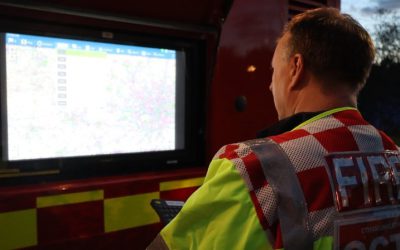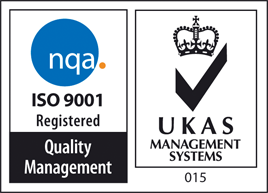FAA Study Validates Aviator UL Smoke Generator as Industry-Leading Solution for Aircraft Fire Detector Testing
 In a comprehensive technical report published by the Federal Aviation Administration (FAA), the Aviator UL Smoke Generator by Concept Smoke Systems has been confirmed as the most effective tool for testing false alarm-resistant smoke detectors in aircraft cabins and cockpits. The study, titled “ Characterization of Smoke Machines in Testing Aircraft Smoke Detectors ” (Report No. DOT/FAA/TC-TT18/9), underscores the importance of precise smoke characteristics when validating advanced fire detection technologies in aerospace environments.
In a comprehensive technical report published by the Federal Aviation Administration (FAA), the Aviator UL Smoke Generator by Concept Smoke Systems has been confirmed as the most effective tool for testing false alarm-resistant smoke detectors in aircraft cabins and cockpits. The study, titled “ Characterization of Smoke Machines in Testing Aircraft Smoke Detectors ” (Report No. DOT/FAA/TC-TT18/9), underscores the importance of precise smoke characteristics when validating advanced fire detection technologies in aerospace environments.
Purpose of the Study: Evaluating Smoke Generator Performance in Aviation Environments
The FAA’s research focused on evaluating whether commonly used smoke generators are suitable for testing new-generation aircraft smoke detectors designed to reduce false alarms. These detectors are increasingly critical in ensuring passenger safety and operational reliability without the disruptive effects of false fire warnings.
The study compared two widely-used smoke generation systems:
- Aviator UL 440 by Concept Smoke Systems — an oil-based smoke machine specifically engineered for aviation and industrial testing
- Rosco 1700 — a water-based theatrical fog machine known to be repurposed for detector testing due to its accessibility
Key evaluation metrics included:
- Particle size distribution (using Phase Doppler Particle Analysis)
- Optical density measurements (obscuration per foot)
- Alarm thresholds and repeatability with both traditional and prototype detectors
Aviator UL: Precision Aerosol Generation for Fire Detection System Testing
The results were unequivocal: the Aviator UL consistently outperformed the Rosco system across all test conditions.
Smaller Particle Size = More Realistic Testing
The Aviator UL produced fine aerosol particles in the range of 1.5 to 1.7 microns, closely matching real combustion particulates. This small particle size is crucial when testing ionisation-based and photoelectric smoke detectors, especially false alarm resistant (FAR) models. In comparison, the Rosco 1700 generated particles over twice as large (~3.6 microns), which do not accurately simulate real smoke conditions in aircraft environments.
Lower Alarm Thresholds and Greater Sensitivity
When tested against two detector types—a Whittaker beam detector and a Kidde Aerospace false alarm resistant ionisation detector—the Aviator UL achieved alarm activation at much lower smoke densities:
- Whittaker beam detector triggered at ~2–3% obscuration/ft with the Aviator, vs ~4–5% with the Rosco.
- The Kidde detector failed to alarm with the Rosco in most tests, only triggering once at a dangerously high 48% obscuration/ft.
- In contrast, the Aviator UL consistently activated the Kidde unit at just 3.3% obscuration/ft, making it suitable for validating early-warning smoke detection systems.
Stable, Repeatable, and Gradual Smoke Build-Up
The Aviator UL demonstrated a smooth, controllable ramp-up in optical density, which is essential for generating meaningful test data. This repeatability supports calibrated testing, regulatory validation, and R&D work for aerospace safety systems.
Engineered for the Aerospace Industry
Unlike theatrical smoke machines, the Aviator UL is purpose-built for the aviation and fire safety testing industry. It features:
- Four independent 160W air heaters for consistent thermal aerosol output
- Trace-heated oil reservoir for fast response and stable generation
- Microprocessor-based PID control system for precision
- Adjustable particle output suitable for simulating both small combustion aerosols and larger particulates
- Inert gas purge system for clean shutdown and reduced residue
- Compact, rugged design suitable for lab or on-site use
It is also fully compatible with aircraft electrical systems (110v 50-450 Hz) and generates a non-toxic smoke ideal for cleanroom, cabin, and engine bay simulation tests.
Meeting Global Standards for Smoke Detector Validation
The results of the FAA study have far-reaching implications for the aviation industry, particularly in the validation and certification of false alarm resistant smoke detectors, which are becoming the new standard in both commercial and military aircraft.
With its superior aerosol quality, repeatable output, and industry-specific design, the Aviator UL supports:
- DO-160 and DO-178 testing protocols
- FAA, EASA, and UK CAA fire protection standards
- Hot smoke testing in aircraft, simulators, and environmental chambers
- Aerospace smoke detector calibration and false alarm rejection analysis
The Industry’s Preferred Smoke Generator for Aircraft Fire Testing
This FAA-backed research confirms what many aerospace engineers and fire safety professionals already know: the Aviator UL smoke generator is the gold standard in smoke simulation systems for the aviation sector.
In environments where precision, safety, and regulatory compliance are paramount, no other smoke generator matches the performance, control, and application-specific engineering of the Aviator UL.
For more information, visit www.conceptsmoke.com or view the full FAA report: pdf/TC-TT18-9.pdf
Watch here:
Equipment used:







